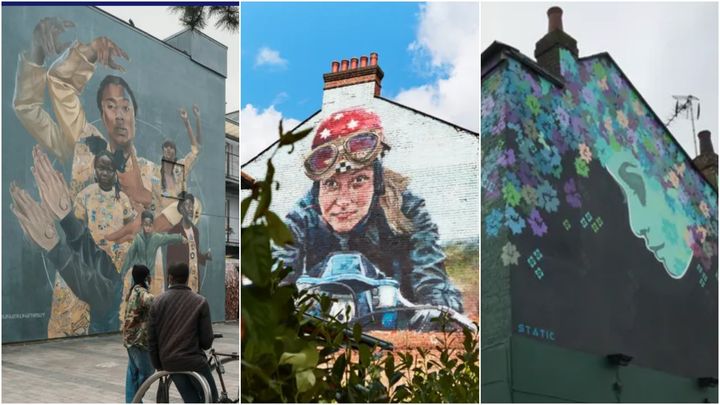
London is famous for its art galleries and museums – but take to the streets, and you’ll see art is all around.
Over the years, councils have valued street art as a way to embellish what were once more deprived areas. And London-based arts organisation Wood Street Walls has played a huge part in this – engaging younger generations to brighten up the city, one wall (or steps and basketball court) at a time.
In the past five years alone, they’ve helped create hundreds of murals in east London, treating the city as their canvas to highlight key issues, express their views and encourage creativity. Their aim is to brighten up neighbourhoods, while honouring the context of the local area. “We use public art as a way to engage with the community,” founder Mark Clack tells HuffPost UK.
“We look into how we can involve the local community and make use of the connections to tell a story of the people who make up society today, looking at the history, culture, and the hidden heroes that people don’t really know about.”
Not only is the artwork stunning, many have poignant stories behind them, too. Here, we learn the meaning behind some of the murals around London, which were painted by homegrown local and established talent.

‘Gesture of a Square’ by Aaron Li-Hill is one of Clack’s personal favourites. It was created with the users of Gillett Square – a community space near Ridley Road Market in Dalston – and funded by the Creative Industries Federation. The subjects of the mural are portraits of locals who often visit the space.
“What’s so special about this powerful freedom wall is that it’s a collaborative piece where the community got involved with the creation,” says Clack.
“People drew or wrote down names, memories, manifestos, and statements on pieces of brown paper. We pasted these up onto the wall and they were folded into the clothing of the figures.”
In Walthamstow, on Wood Street, is an eye-catching floral art display decorated down the side of The Flower Pot Pub. A woman looks down on the street, and her hair morphs into flowers, spread around the front of the pub.
“The lady of the flower pot is like a mythical god, looking on the comings and goings of Wood Street,” one woman said, describing the mural. “She’s simply watching, waiting – but we will never know what she is waiting for.”
It was painted four years ago by London-based duo, Tom Jackson and Craig Evans, known as Static. “The landlord asked us to help give the exterior of the pub a new lease of life,” says Clack.
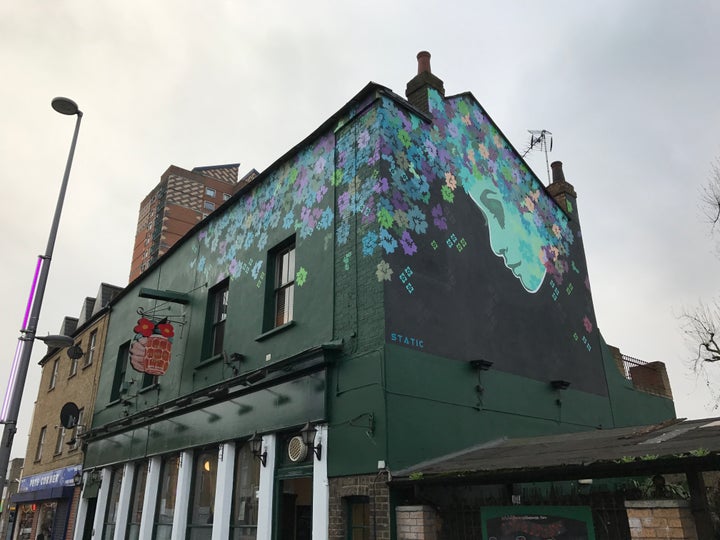
Over the years, as Wood Street Walls has grown, housing associations and local authorities have approached the group with regeneration projects for schools, community groups and local residents. The artwork is often consulted on with homeowners, tenants and landlords, matching them to suitable artists.
Take this barn owl in mid-flight, painted by Jane Mutiny on the side of a house. Located in Highams Park on Winchester Road, along the footpath of the River Ching, it raises awareness of endangered wildlife and the extinction crisis.
Mutiny often highlights unusual animals and puts her signature anatomical heart and “love wildlife” at the bottom of her work.
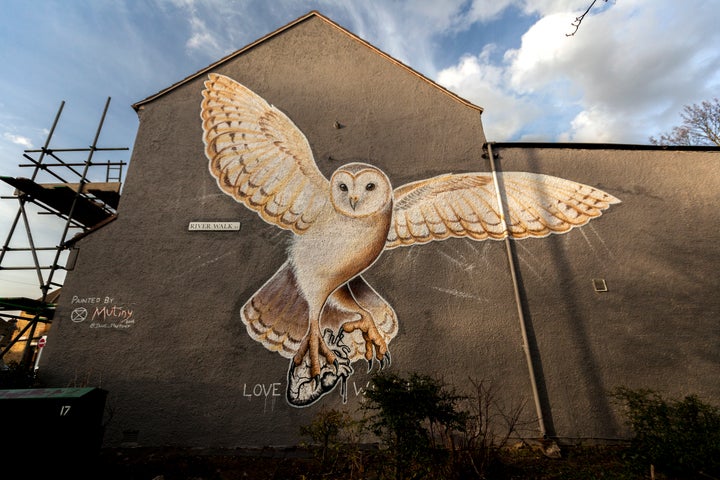
Besides being a conversation starter for important issues, art is also painted to commemorate unsung heroes. The work below was part of a project to celebrate Beryl Swain, who used to live in the area. She was the first female motorcyclist who competed in the Isle of Man TT (tourist trophy race) back in 1962, causing commotion because motorbikes were considered ‘unladylike’.
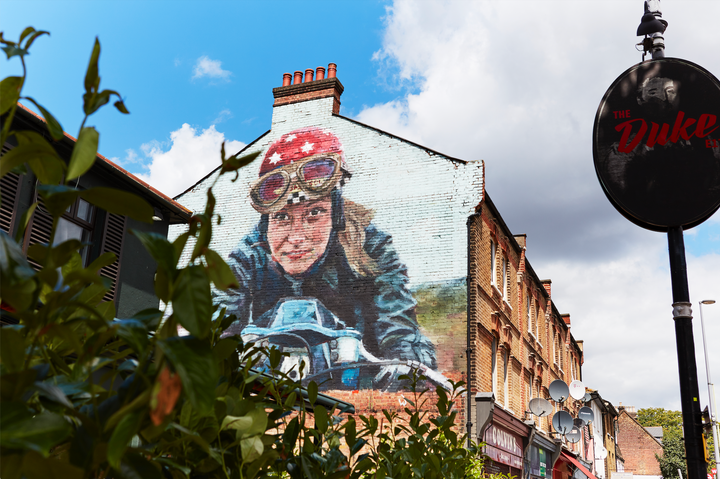
And then there’s ‘Creative Courts’ in Bristerne Park, Walthamstow – the most colourful basketball court you’ll ever see. The artwork was created alongside the National Citizen Service, as well as local Walthamstow resident Moses Musana.
“It’s a project to raise awareness of the need for greater investment into grassroots and elite-level basketball,” Clack says.
“Despite being the third most popular participated sport in the UK, funding falls vastly behind other sports such as rowing, rugby, and cycling.”
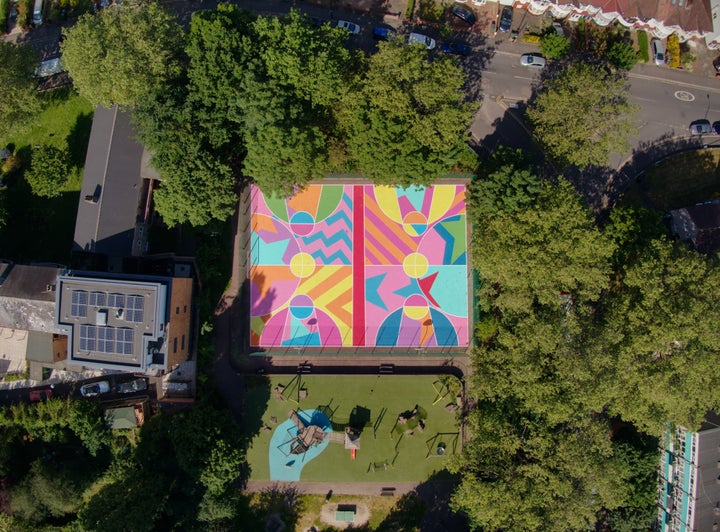
Artists seek out alternative spaces to share their creations, too. ‘Towards a New Normal’, nicknamed locally as ‘The Staircase of Dreams,’ is a large-scale public artwork on the steps of a local college.
It was installed in the lead-up to the 2020 London Design Festival, and explores unity and activism. “The approach and social practice to deliver this work has helped articulate the students’ thoughts and feelings,” says Clack.
″[It] was an incredible collaborative mural that’s a bit different from the norm. This was made possible through creative Zoom workshops with a group of students and future creatives from Waltham Forest College in conjunction with artist and designer Fandangoe Kid.”
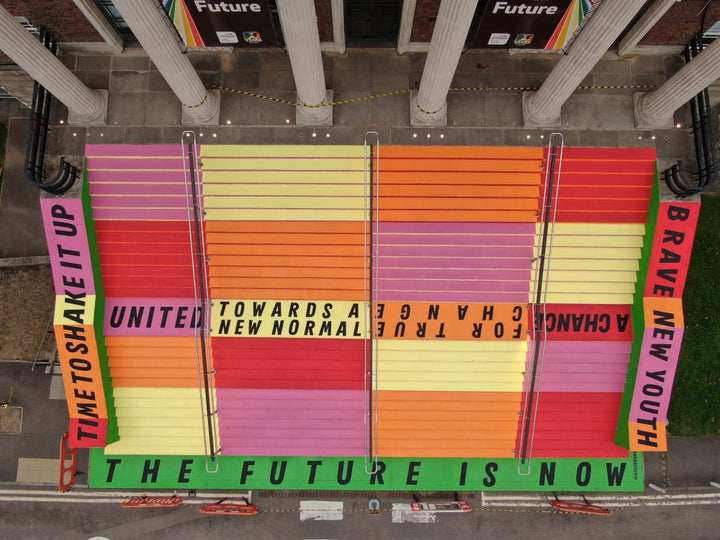
The finished murals always look great – but has a piece of art ever failed to come out the way it was supposed to? “Too many to count,” Clack laughs. “We’ve painted in rain and snow more times than we’d like!”
Despite the bright colours, bold graphics and in-your-face visuals, there are some things the art company steers clear of. “We have a rule where no political slogans, no profanity, nothing to promote hate speech,” says Clack. “It’s embedded in the community where residents in the area have to look at it every day. We wouldn’t paint anything that owners wouldn’t necessarily want or like.”
Public art is powerful, he adds, but should be enjoyed by everyone. “We want to ensure it’s accessible by all in an urban environment, especially those that might not have access to museums.”
What else is on the horizon? Clack says there are flagship projects lined up with Great Ormond Street Hospital and high-profile brands. So, watch this space. If you want to see them for yourself and live nearby, you can find a map of where all the murals are located in E17 and E11 postcodes in east London.
You’re reading Covid-Free Zone, a section designed to offer a little respite during the pandemic. For more fun and escapism, browse the articles here.